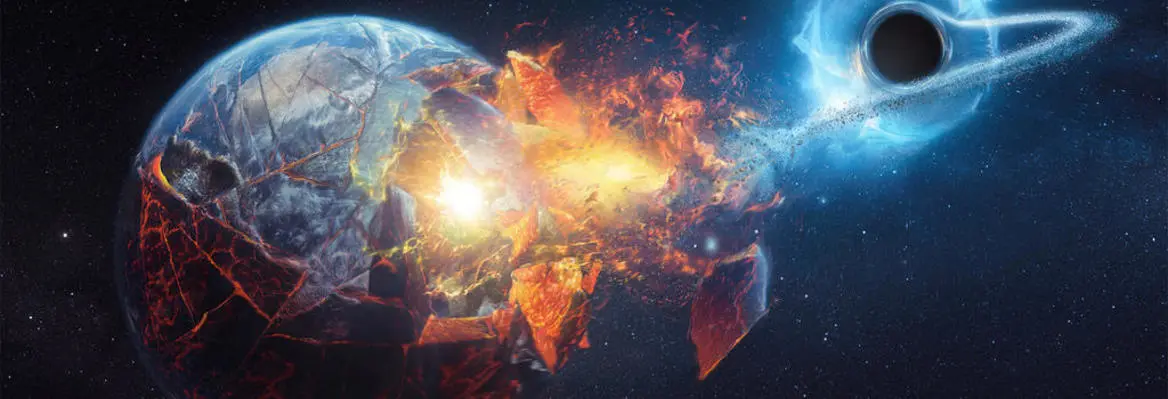In deep underground laboratories, buried below rock and shielded from cosmic radiation, physicists have build extremely sensitive detectors aimed at solving one of the Universe’s greatest mysteries. They are awaiting signals of a new kind of particle, promised to them by cosmologists and astrophysicists: Dark Matter. The highly elusive particle is thought to dominate the mass budget of our galaxy and of the Universe as such. There should be about six times more Dark Matter than ordinary, “baryonic” matter (which includes everything from interstellar gas clouds, stars, and planets, to the screen you are reading this on, and you yourself). Dark Matter has not yet been directly detected, despite numerous experiments, their painstaking efforts to reduce background signals, and thus ever increasing sensitivity. Many researchers nevertheless remain confident that a detection is within reach. Yet some worry: what if we are chasing a phantom? What if Dark Matter does not exist?
There are several lines of argument for the existence of Dark Matter. On the scale of galaxies, the need for Dark Matter is mostly inferred from their dynamics. Disk galaxies rotate. Counting up the distribution of mass visible in a galaxy – in the form of stars and gas – we can use Newton’s law of gravity to calculate how fast the galaxy should rotate at different distances from its center (the “rotation curve”). The rotation should be faster in the center and slower with increasing distance. Yet measurements reveal that galaxies rotate faster than expected and that the rotation velocity does not drop at increasing radii. Taken at face value, this would imply that galaxies are not gravitationally bound; the gravity of their stars and gas is insufficient to keep them from flying apart. To be stable, galaxies would have to contain large amounts of unseen mass. This mass has been termed “Dark” Matter because it only interacts through gravity, but not with electromagnetic radiation.
This argument for Dark Matter implies one crucial assumption: Newton’s law of gravity applies on galactic scales. This is a long stretch. Newton’s law was uncovered on Earth, where the gravitational acceleration is 1011 times stronger than typical for galaxies, and in the Solar system, where even the most distant planet Neptune experiences a 10,000 times stronger acceleration than stars in galaxies. It is therefore far from confirmed whether Newton’s law can be extrapolated to the very low acceleration regime that galaxies live in.
This was also noticed by Israeli physicist Mordehai Milgrom. In 1983, he suggested a radically different approach to explain the high rotation speeds of galaxies. Instead of introducing Dark Matter, Milgrom proposed that the laws of gravity are different on the scale of galaxies – that Newtonian Dynamics becomes “Modified Newtonian Dynamics” (MOND). In MOND, or Milgromian Dynamics, the gravitational acceleration of a given mass is stronger than in the Newtonian case, and does not scale as 1/r2 with distance r but rather as 1/r. This explains why galaxies rotate fast without tearing themselves apart, and why the rotation curve does not drop at larger radii. Since MOND must preserve the successes of Newtonian gravity, which is very well tested in the solar system, there has to be an acceleration at which a transition occurs. This acceleration scale is called a0.
__
"Laboratory searches for Dark Matter are important...However, detectability is not falsifiability. What if we do not succeed in detecting Dark Matter?"
___



















Join the conversation